Valentine's Day is approaching - the holiday of all lovers. On February 14, restaurants around the world are breaking down at the seams, and people are massively showing love for each other. How did it all start? What is the story behind the gift marketing machine to express your love? What are the proven tricks of marketers? And what should you keep in mind when planning communication for Valentine's Day in 2024? I encourage you to read!
Since I'm a fan of small things, I always try to check out the story behind a particular holiday. As for Valentine's Day, I was convinced that it was the work of some capable marketer (as was the case with the Santa Claus and Coca-Cola characters), but... no! In ancient times, on February 15, Lupercalia was celebrated, that is, celebrations on the occasion... fertility. The arrival of Christianity in Europe led to the Lupercalia being transformed into a religious holiday, in honor of Saint Valentine, a Roman martyr, and to separate it from the pagan Lupercalia, the date was changed to February 14.* (the continuation of this very interesting story at the end of the article is only for regular fans of trivia)
But back to the point - In the 18th century, it became popular in England to give loved ones Valentine's Day gifts, as well as handmade postcards, which later spread to the American colonies. Mass production of commercial Valentine's Day cards in the United States did not begin until the 1940s. XIX century (This coincided approximately with the strongest development of advertising), and in Poland they began to be celebrated only in the 90s.
How did marketers decide to turn love into one of the most marketing holidays of the year? I'll start with a brief history of advertising in the context of Valentine's Day (I think it's always best to know a little history to get the gist of the matter), and then move on to specific details that will be useful to you when planning your marketing activities for 2024. Then…
initially, they started with creating cards., which I mentioned earlier. The next step was a book with a neat title: Valentine's Book of Poems, published in 1879 by Esther Howland (called the mother of the Valentine's Day commercial). It was a collection of 131 maxims that you could use to describe your love on a piece of paper. Howland also began mass-producing self-made love cards, which she and the others made quite a fortune from.
They looked something like this:
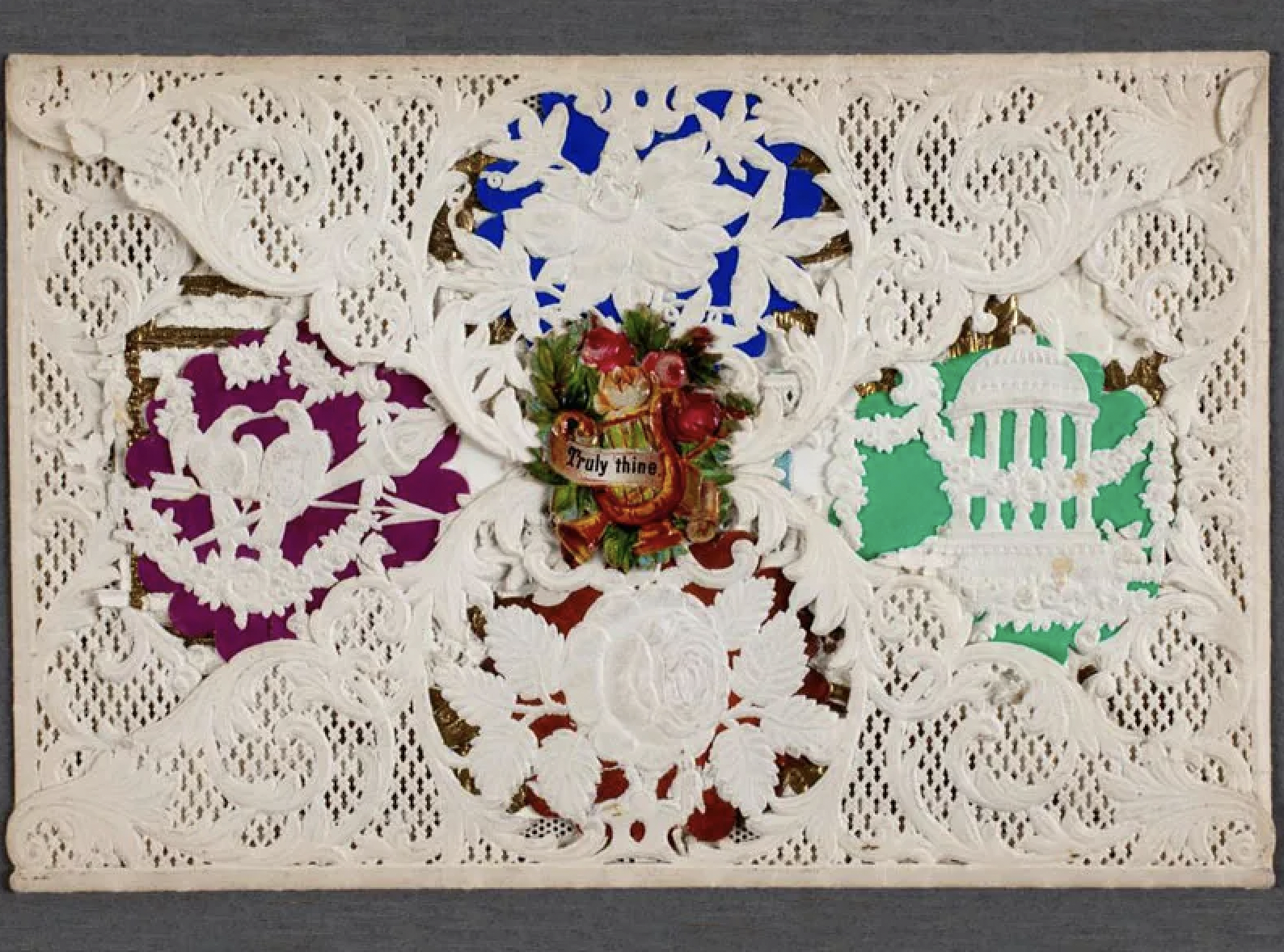
source: http://gigi.mwa.org/
A few years later, companies specializing in Valentine's Day cards began to appear, in a slightly more modern style, the style of which we know from old American advertising. The following example refers specifically to 1949.
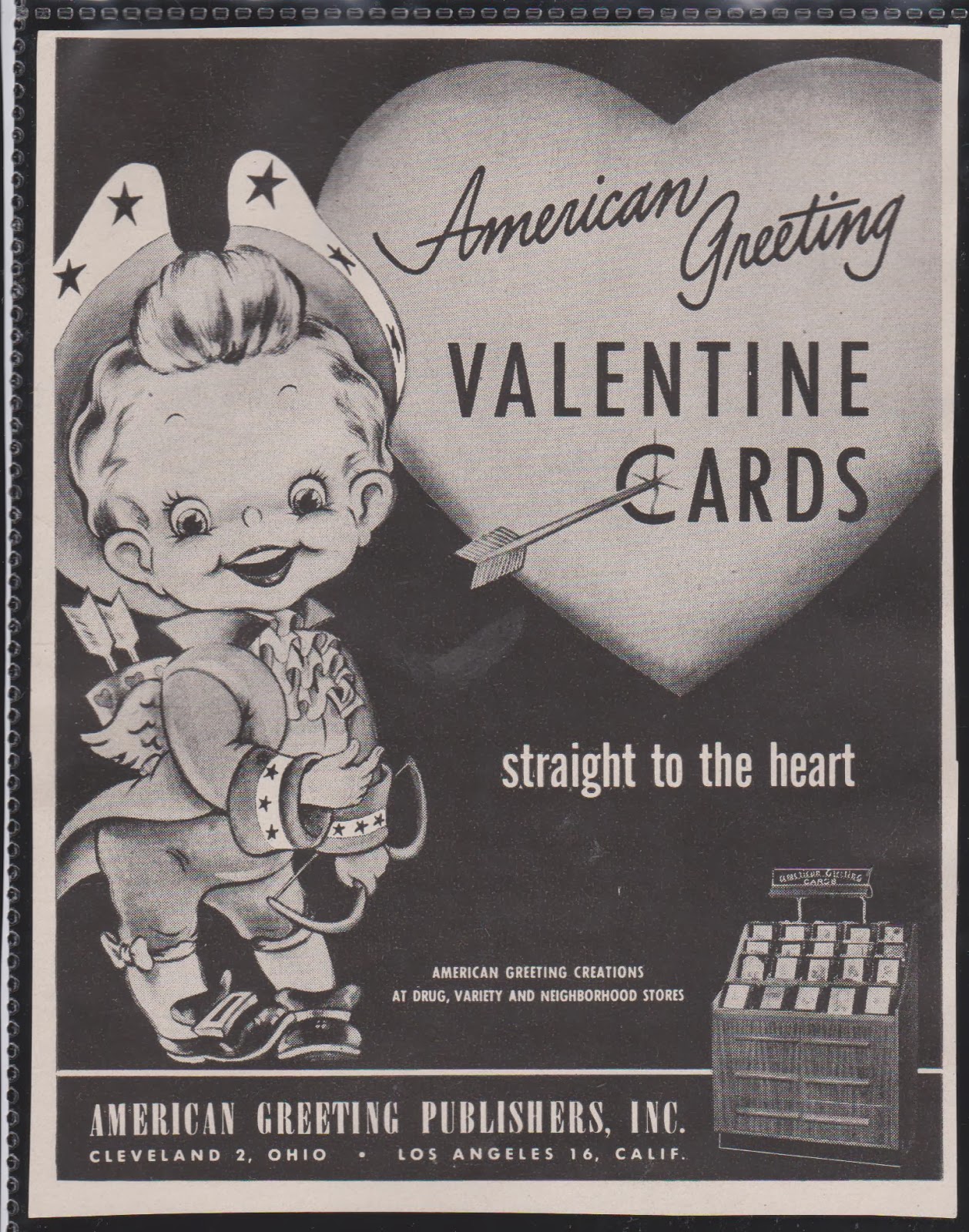
źródło: https://vintagerecycling.blogspot.com/2014/02/1949-american-greetings-valentine-ad.html
With time and the development of advertising, both print and radio or television, the world of lovers has seen more potential than just making postcards. Here is one of the examples that has forever entered the canons of gifts for Valentine's Day-flowers!
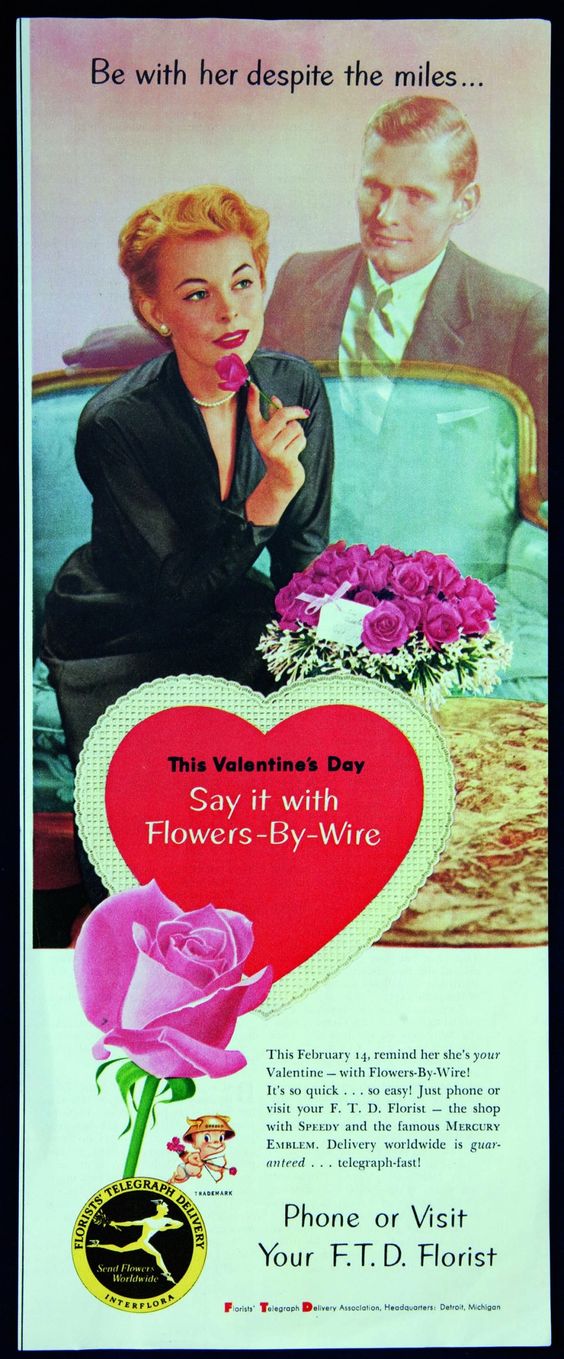
źródło: https://pl.pinterest.com/pin/563442603393057907/
.. Aren't colors enough to express love? The same opinion was shared by the agency behind the launch of the “Diamond is forever” campaign for the De Beers brand in 1948!
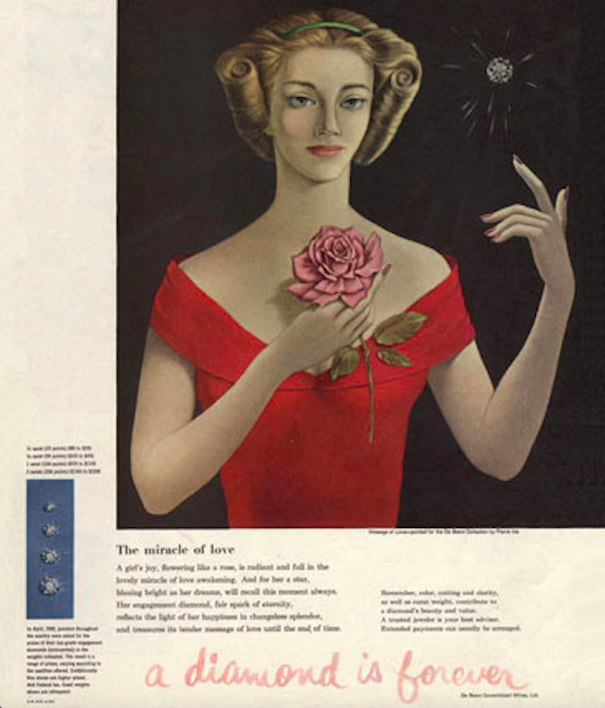
źródło: https://www.thedrum.com/news/2016/03/31/1948-de-beers-diamond-forever-campaign-invents-the-modern-day-engagement-ring
According to wedding website The Knot, Valentine's Day is one of the most popular days not only for saying “I love you”, but also for saying "I love you"., to make an offer. The Valentine's Day engagement avalanche is supposed to have been started by this particular campaign. In the late nineteenth century, the newly discovered huge diamond mines in Africa led to a sharp drop in the value of this precious stone. All in order to rediscover the image of the diamond in America, De Beers collaborated with the agency n. w.Ayer, which was supposed to promote diamonds as a symbol of eternal love. With their "a diamond is forever" campaign, they started a certain trend – diamonds are an integral part of engagement parties (and Valentine's Day)!
What does Valentine's Day look like today and what should you consider when planning your Valentine's Day campaigns for 2024?
Inflation isn't dampening consumers ' appetite for celebrating occasions like Valentine's Day. In fact, despite the rising prices, people try to appreciate their loved ones and give them generously on the occasion of the Lovers ' holiday. This is good news for retailers, as well as restaurateurs and people associated with food sales – people not only go out to eat, but also cook at home!
It is important to note that marketing efforts are currently not limited to just promoting postcards or diamond rings. Valentine's Day has become one of the main communication pretexts in the media plans of most brands. No wonder-there is a huge advertising potential dormant in the world of lovers! Below are some examples:
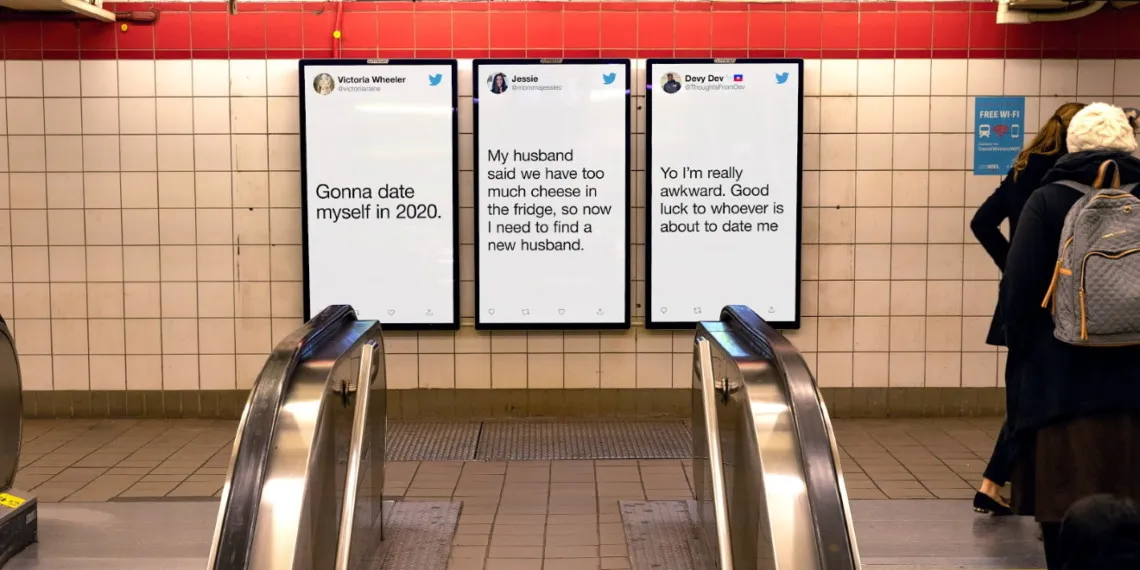
source: https://www.methodmarketing.org/blog/valentines-day-marketing/
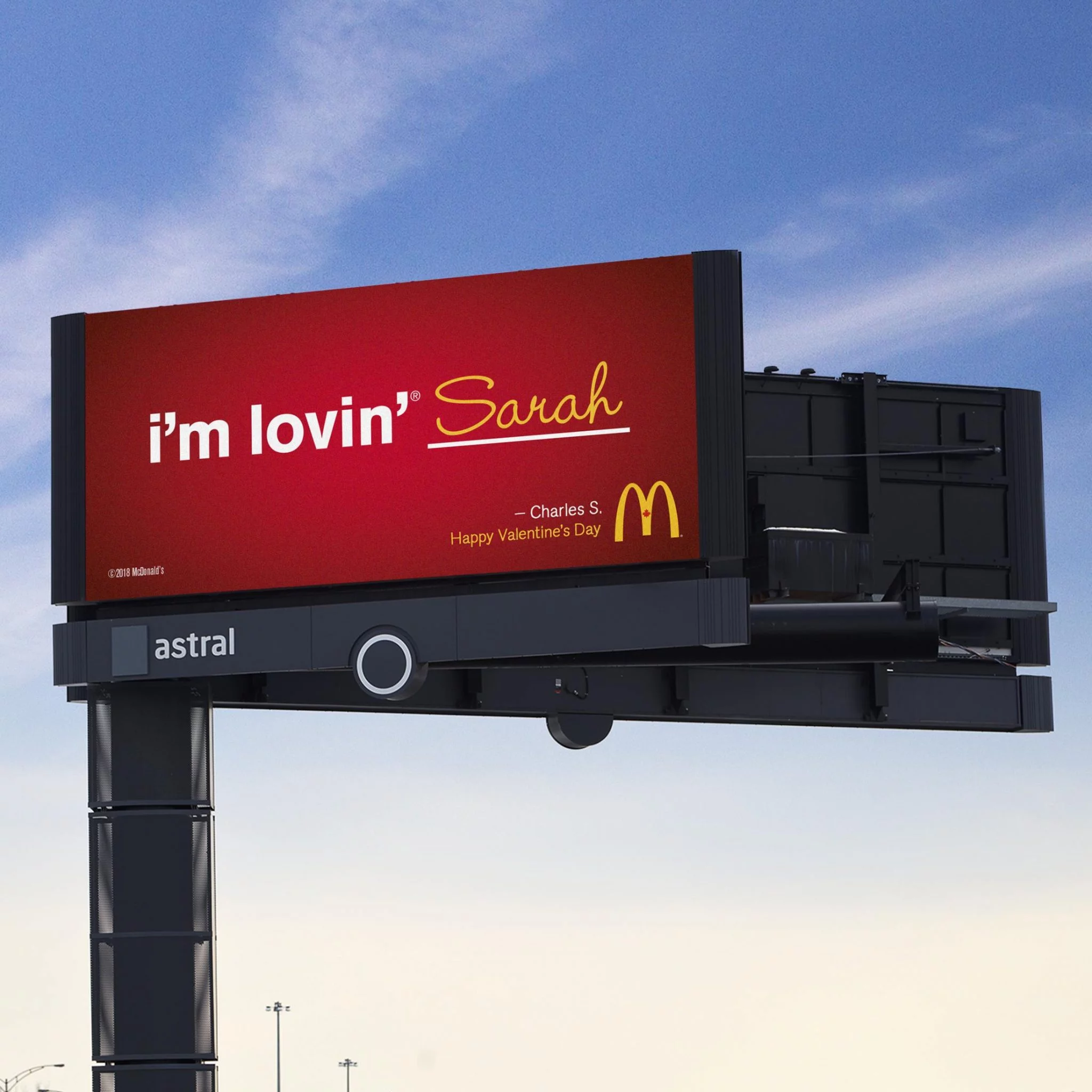
source: https://qbf.com.ph/out-of-home-ideas-for-valentines-day/
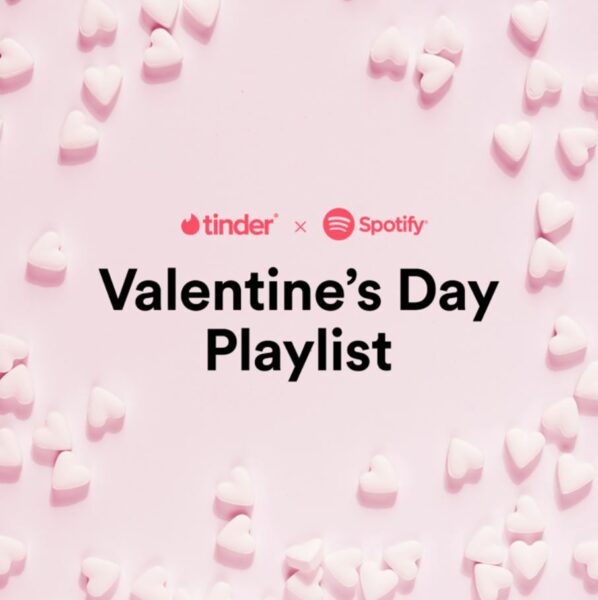
source: https://www.creatopy.com/blog/valentines-day-marketing-campaigns/
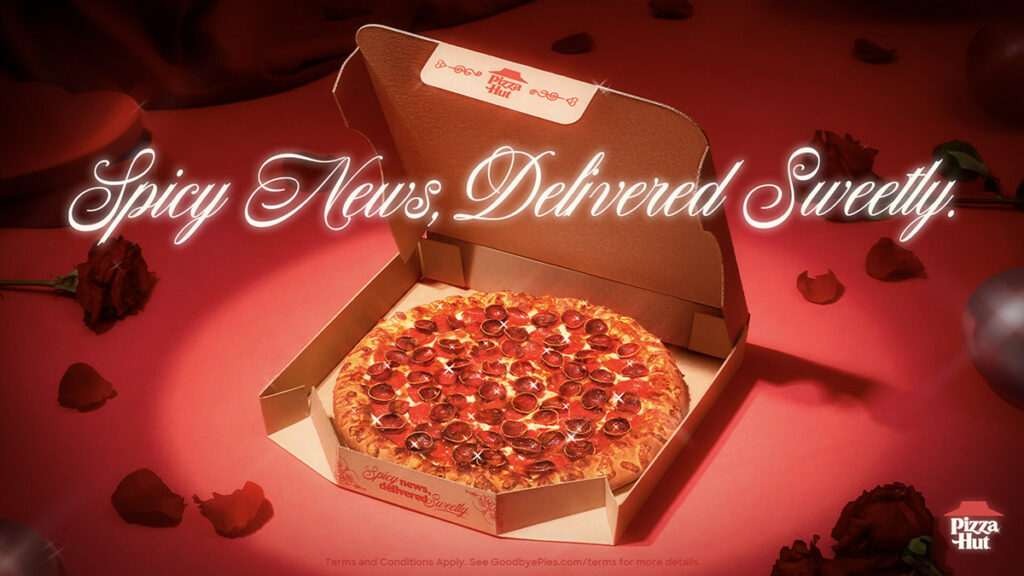
Source: Pizza Hut
Important information: Valentine's Day is no longer a holiday just for lovers.
According to YouGov, about 60% of adults in the United States believe that this is a holiday intended for both romantic and platonic relationships. Generation I (gen I) is much more likely than millennials to say that they will celebrate Valentine's Day with friends and family. Millennials, on the other hand, remain true to their traditions-most of them will focus on their significant other on February 14.
Despite the differences in approaches to this holiday, both generations agree that this is a day when you can show love and appreciation not only for romantic relationships. This is very important information for marketers!
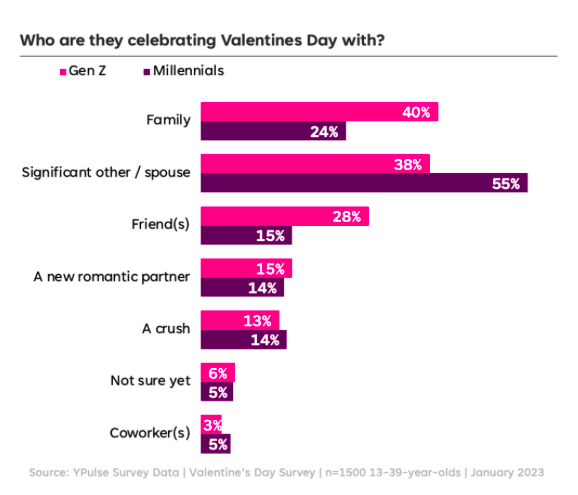
Source: Ypulse Survey Data
In conclusion, we live in a time when you need to be aware of events and you can not follow only confusing schemes. Generation I, as well as even younger generations, are moving away from the stereotypical approach to Valentine's Day. If you want to reach this target audience,you definitely need to change the tone of communication on Valentine's Day. According to the Valentine's Day Survey, 58% of people from generation to generation say that " friendship is more important than romantic relationships." Thus, friendship can become a guide for you when planning communication. If your target audience is millennials,you have less of a nut to crack. They're still old school (I know, because I'm on my own)!
P.S. low thrust:
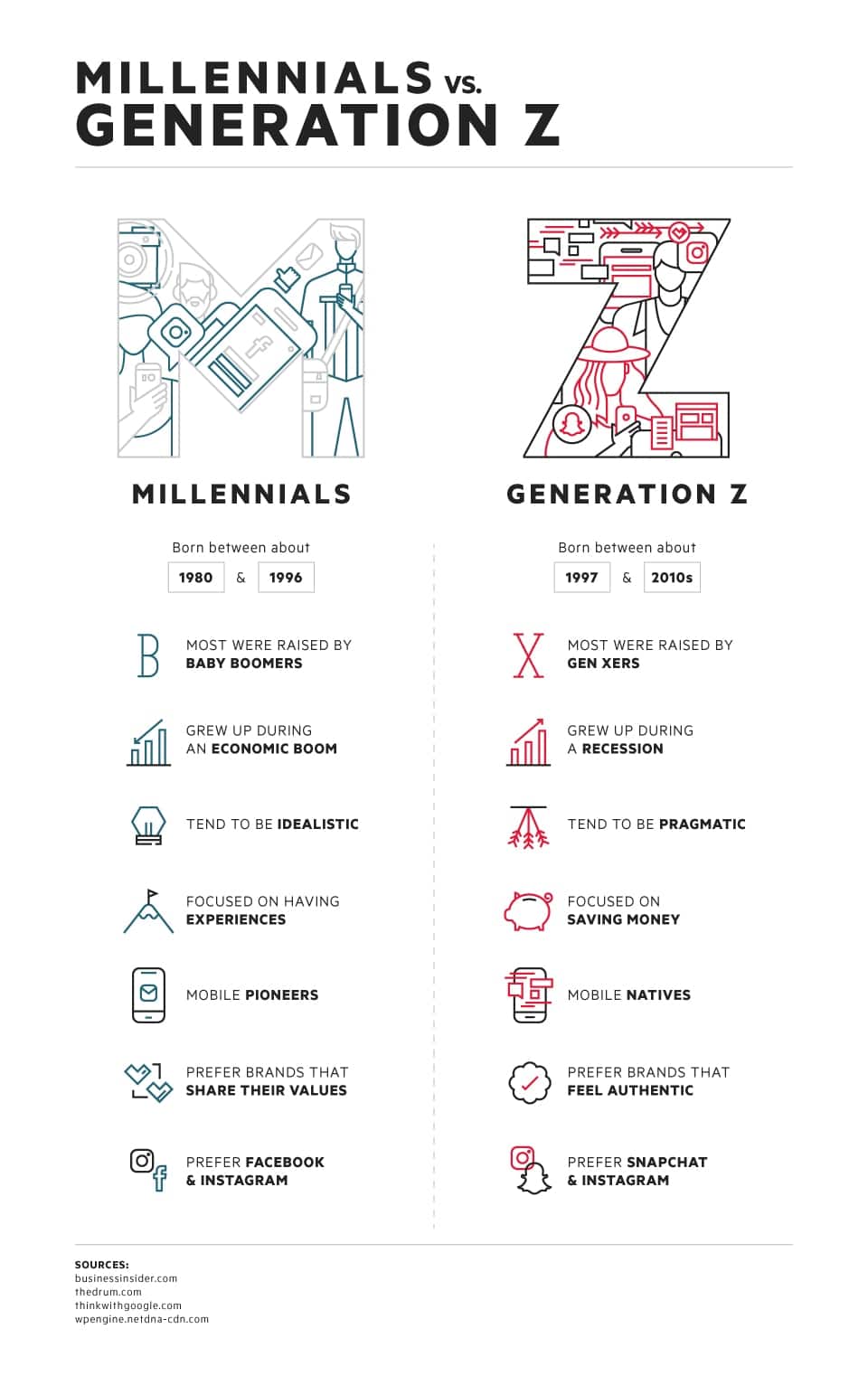
* graphics from 2019-Snapchat was supplanted by TikTok 🤷♀️
źródło: https://mobirank.pl/2019/04/14/jaka-jest-roznica-miedzy-pokoleniem-z-a-millenialsami/
* [continue quiz]
According to Christian tradition, Saint Valentine was a bishop who conducted secret marriage ceremonies for soldiers and their female partners, opposing the decision of Emperor Claudius II, who forbade young people's marriages to focus entirely on fighting. The marriage ban was a great shock to the Romans, but they did not dare to object to the powerful emperor. Bishop Valentine saw that the young lovers were distraught that they could not join in marriage, so he decided to secretly make vows to them. Unfortunately, it couldn't stay hidden for too long. Emperor Claudius found out about this and executed Valentine on February 14, 270. Thus, February 14 became Valentine's Day, and St. Valentine became its patron saint. However, it wasn't until the 14th century that St. Valentine's day finally became associated with love thanks to Geoffrey Chaucer's poem” The Bird Diet", dating back to 1382. According to an allusion found in the song, on Valentine's Day, birds gathered together, which became a symbol of lovers. In the 18th century, it became popular in England to give loved ones gifts and gifts for Valentine's Day, as well as handmade cards for Valentine's Day, which later spread to the American colonies, but only in the 1940s. In the 1880s, Valentine's Day cards began to be commercially produced in the United States.

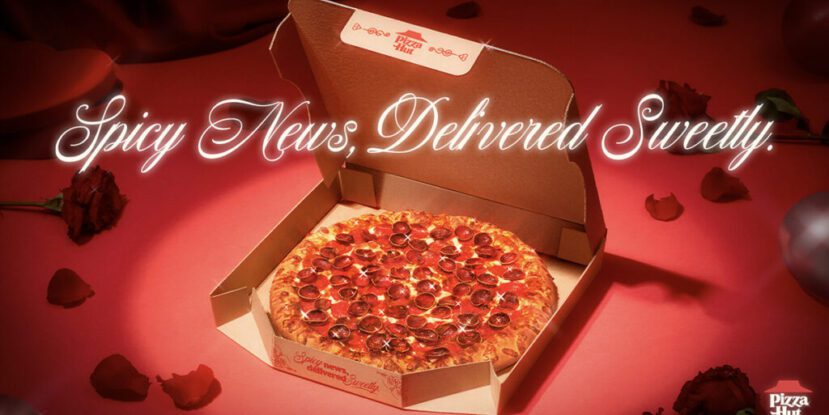

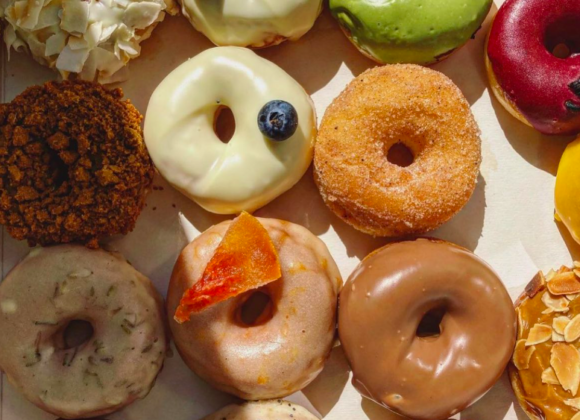






 Junior specialist in Marketing Communications and PR.
Junior specialist in Marketing Communications and PR.


 He is a graduate of the University of Warsaw and the Main School of Agriculture. We have been in the HoReCa industry for more than 10 years. For many years, he has been associated with the Trip group, Sobienie Royal Golf and Country Club, and the Florentin Restaurant in Warsaw.
He is a graduate of the University of Warsaw and the Main School of Agriculture. We have been in the HoReCa industry for more than 10 years. For many years, he has been associated with the Trip group, Sobienie Royal Golf and Country Club, and the Florentin Restaurant in Warsaw. She graduated from the Faculty of Architecture of the Warsaw Technical University with a degree in Architecture for the Knowledge Society and Visual Communications at the Polytechnic University of Milan. A specialist in creating a mood. She has gained experience at home and abroad at numerous international seminars (Seville, Lisbon, Florence), fellowships at La Sapienza (Rome), etc. m.in. in Carmi e Ubertis and ADM Milano.
She graduated from the Faculty of Architecture of the Warsaw Technical University with a degree in Architecture for the Knowledge Society and Visual Communications at the Polytechnic University of Milan. A specialist in creating a mood. She has gained experience at home and abroad at numerous international seminars (Seville, Lisbon, Florence), fellowships at La Sapienza (Rome), etc. m.in. in Carmi e Ubertis and ADM Milano.








 A manager with many years of experience in the cosmetics, food, and children's industries. During his career, he was associated with such companies as: L'Oreal, Samsung, Danone-Nutricia, Unilever. During his professional life, he was responsible, among other things, for the development of e-commerce sales and content in Poland and the countries of Central and Eastern Europe.
A manager with many years of experience in the cosmetics, food, and children's industries. During his career, he was associated with such companies as: L'Oreal, Samsung, Danone-Nutricia, Unilever. During his professional life, he was responsible, among other things, for the development of e-commerce sales and content in Poland and the countries of Central and Eastern Europe. 

























































